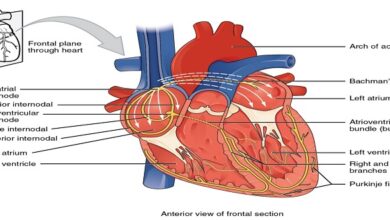
Your life is filled with choices! Every day you make thousands of choices, many related to food. Some seem trivial. Others are important. A few may even set the course of your life. But as insignificant as a single choice may seem, made over and over, it can have a major impact on your health—and your life!
Most importantly, the practical tips and flexible guidelines on its pages help you choose nutritious, flavorful foods to match your own needs, preferences, and lifestyle—even as your life and family situation change. Eating for health is one of the wisest decisions you’ll ever make
Fitness: Your Overall Health
What does being fit mean to you? Perhaps being free of disease and other health problems? Or having plenty of energy, a trim or muscular body, or the ability to finish a 10K run or fitness walk? Actually, “fitness” is far broader and more personal. It refers to your own optimal health and overall well-being. Fitness, or wellness, is your good health—at its very best.
Fit Is Ageless
Fitness at every age and stage in life depends on healthful eating and active living. The sooner you make them your priorities, the better your health. That, too, is what this book is all about—how to eat for health and stay physically active throughout the cycle of life, and enjoy great-tasting food along the way nutshell, nutrition is how food nourishes your body. And being well nourished depends on getting enough of the nutrients your body needs—but not too much— and on keeping your weight within a healthy range.
Read More: Komikli.net
Smart Eating: Pleasure, Too!
Why do you choose one food over another? Besides the nutrition benefits, food is a source of pleasure, adventure, and great taste! It’s no surprise that people entertain and celebrate with food, or look forward to a special dish.
Your own food choices reflect you and what’s important to you: your culture, your surroundings, the people around you, your view of yourself, the foods available to you, your emotions, and certainly what you know about food and nutrition. To eat for health, you don’t need to give up your food favorites. Simply learn how to fit them in. Good nutrition adds pleasure to eating—especially as you eat a greater variety of vegetables, fruits, whole-grain foods, and other nutrient-rich foods.
Smart Eating, Active Living: Guidelines for Americans
Healthful eating and active living: they’re among your best personal investments! While your genes, age, surroundings, lifestyle, health care, and culture strongly influence your health, what and how much you eat and how much you move are key to your fitness equation. What’s the secret? It’s no secret at all, just solid advice. In a nutshell, most people need to eat fewer calories, be more active, and make wiser food choices.
Enough, but Not Too Much
Its common knowledge: many Americans fall short on their nutrition report card! Many consume more calories than they need—and too much saturated fat, transfats, cholesterol, added sugars, and salt. On the flip side, both kids and adults often shortchange themselves on calcium, potassium, fiber, magnesium, and vitamin E. Many adults don’t consume enough vitamins A (as carotenoids) and C, either. And others,
“Weight” for Health Weight Management
Despite known risks, overweight and obesity have become national and global epidemics, and not just for adults. Overweight among children and teens has risen dramatically within the past two decades. Key reasons? In the United States, typical eating and lifestyle patterns provide more calories (energy) than many people need: too many consumed, too few burned in physical activity.
Last word
To lower the risk for high blood pressure or delay its onset if you’re sodium-sensitive, the general advice is to go easy on salt (and sodium) and consume more potassium. Choose and prepare foods with little salt. Use Nutrition Facts on food labels to find foods with less sodium and more potassium. And consume plenty of potassium-rich foods, such as fruits and vegetables





